
CSU alumnus and Target Executive Vice President Arthur Valdez, far right, listens to one of the student presentations on Oct. 16 at the Nancy Richardson Design Center.
Teams of Colorado State University students in a new “Design Thinking” course spent the first six weeks of the semester working on a real-world case study: developing plans for a new Target store. And the top four teams got to present their proposals to Target officials who visited campus on Oct. 16.
The class, Introduction to Design Thinking, has 68 students from 38 different majors. It’s what “design thinking” is all about: getting people from a variety of fields to the table so that multiple perspectives result in better outcomes.
Teams of five students received their charge from Target officials at the beginning of the semester: Develop a strategy for the location, design and merchandising of a new small-format store in Northern Colorado. Each team was asked to address five topics: community engagement, localization merchandising, delivery options, diversity/inclusion and company purpose.
Selection process
After six weeks, the instructors of the course heard presentations from all 14 teams and chose the top four that would get to present their plans to Target officials in person at the Nancy Richardson Design Center. The course is being co-taught by Sarah Badding, the RDC’s operations and academic administrator, and Scott Shrake, director of the Institute for Entrepreneurship in the College of Business.
Badding and Shrake said the students did extensive research for their proposals, interviewing customers, identifying actual properties for their stores, creating digital renderings and detailing delivery/pick-up options, transportation/accessibility issues and community interaction. One team even made a Fort Collins-centric Target app for smartphones.
“I think there was a nugget in every presentation that was unique,” Shrake said. “They’ve really come a long way since that first week. They delivered.”
“It was very challenging to pick the top four,” Badding added.

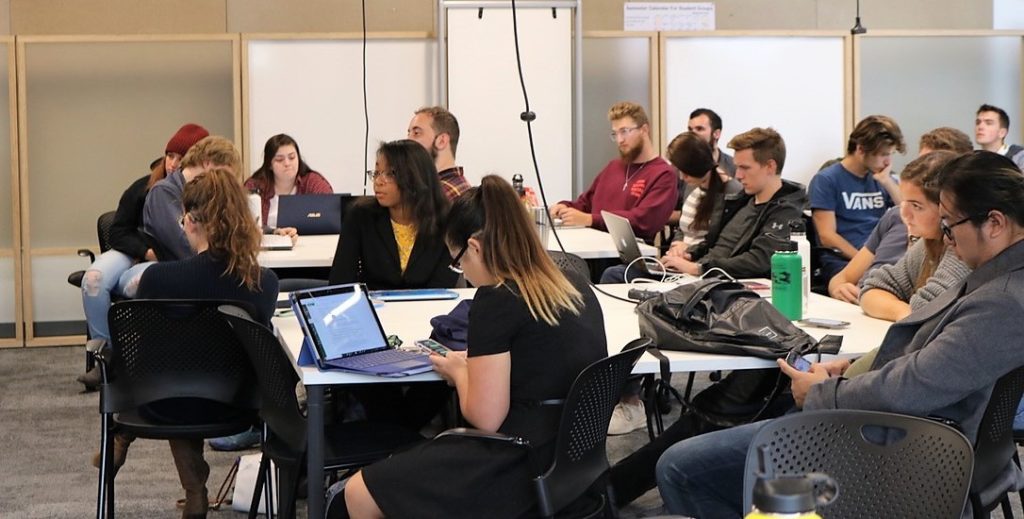
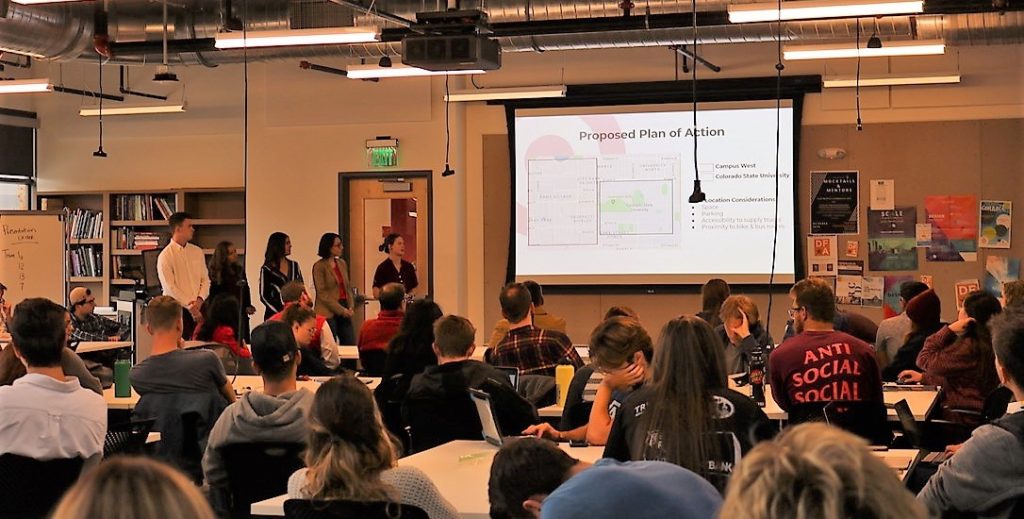
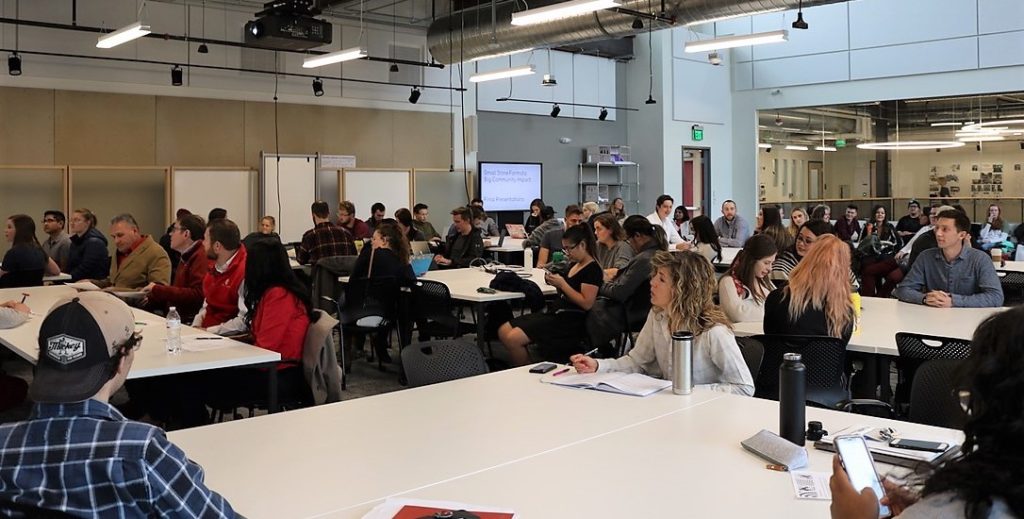
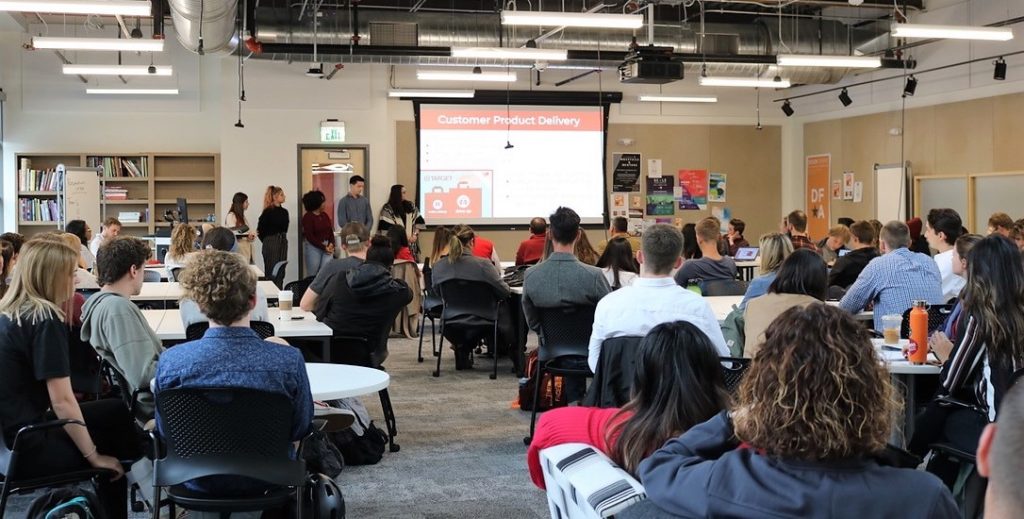
Photos by Erica Howe
Alumni involvement
Among the Target officials who judged the final four teams’ proposals on Oct. 16 was Arthur Valdez, a first-generation CSU graduate who serves as Target’s executive vice president and chief officer of supply chain and logistics.
Valdez, who earned a bachelor’s degree in business administration from the College of Business in 1992, has forged a partnership between Target and CSU, and he spent the week on campus participating in various Diversity Symposium events. He was the Career Center’s featured speaker at an Oct. 15 luncheon, spoke to a couple of management classes and participated in workshops and a networking event, among other activities.

“Being part of the Diversity Symposium week here aligns with the Target culture because we’re very focused on diversity and inclusion,” Valdez said. “So bringing those two worlds together this week has been fantastic. It’s what I think CSU is trying to reinforce for the students, that we have to be able to think differently and understand our biases to operate in this new world.”
At the design thinking competition, Valdez and the other Target judges (including CSU alumnus John Walsh, store director of the Target at College Avenue and Troutman Parkway) listened to the teams’ presentations and chose Team 12 as the winner. Target provided $5,000 to offset the costs of running the case-study competition, and each member of the winning team got a $200 Target gift card.
Students reflect on project
Fourth-year marketing and management major Sarah Rhodes and second-year interior architecture and design major Dani Michelson were members of the winning team. Their proposal called for a Target store at the corner of Shields and Birch streets geared toward CSU students and young families, featuring local products, lots of bike racks and a floor made with beetle-kill pine. The team included a second-floor coffee shop that would serve as a meeting space and place to post announcements about community events, with large garage doors that could be opened during nice weather.
“It was a perfect mix,” Michelson said of the team, which also included math, computer science and journalism and media communication majors. “We all came from different backgrounds, so nobody had the same ideas.”
But the two students acknowledged that the team got off to a rough start.
“We struggled a lot at the beginning of this project,” Rhodes said. “Scott and Sarah had warned us that it would be an iterative process and that we’d likely fail at first. We found out what wouldn’t work pretty quickly.”
“Small failures led to bigger ideas,” Michelson added. “Each time we failed, it led us to something better. You’re not going to learn if you succeed every time.”
“It’s all about failing faster to succeed sooner,” Badding said, adding that a key part of the design thinking process is to learn quickly from early mistakes.

Target officials applaud the final student presentation before deliberating on which team to choose as the winner.
‘Real-world experience’
Rhodes and Michelson said preparing and presenting plans for their store to the Target officials was an invaluable learning opportunity.
“Because it was a real-world experience, it was different than any other class we’ve taken,” Rhodes said. “It was great to work with a major corporation that is wanting to localize. We’re so thankful to Target for trusting us, in an introductory class, and being so helpful and supportive.”
The Target judges said they were impressed with the ideas that the four teams came up with.
“I think the way students thought about integrating with the community was great,” said Josh Wing, senior director of inventory, planning and control for Target.
“I really like the analytics that I heard today, the assessment, the data that they were looking at to determine the right setup for the store and who their customer was going to be,” Valdez added. “And I really like the way they were using the store as a community billboard, or place of communication. They took the concept of the Target store and created a community around it that people would see as an anchor for information gathering or community gathering.”
Mutually beneficial
Valdez noted that hearing from CSU students gives the Target leaders insights.
“When we have these conversations, we learn more about where this generation of students is, how they’re thinking and what they’re worried about,” he said. “One thing that was reinforced for me big time this week was that this group of students is very much focused on sustainability.”
Valdez also lauded the Design Thinking certificate program, which was launched last year at the RDC.
“Not enough universities are combining all of these different areas together,” he said. “What CSU has done here in bringing all of these fields together under one roof, to allow that interaction to occur within the teams and get wider exposure in critical thinking and problem-solving, that’s pretty cool. When I heard that, I thought, ‘Wow, it would be great for us to be involved in that.’”
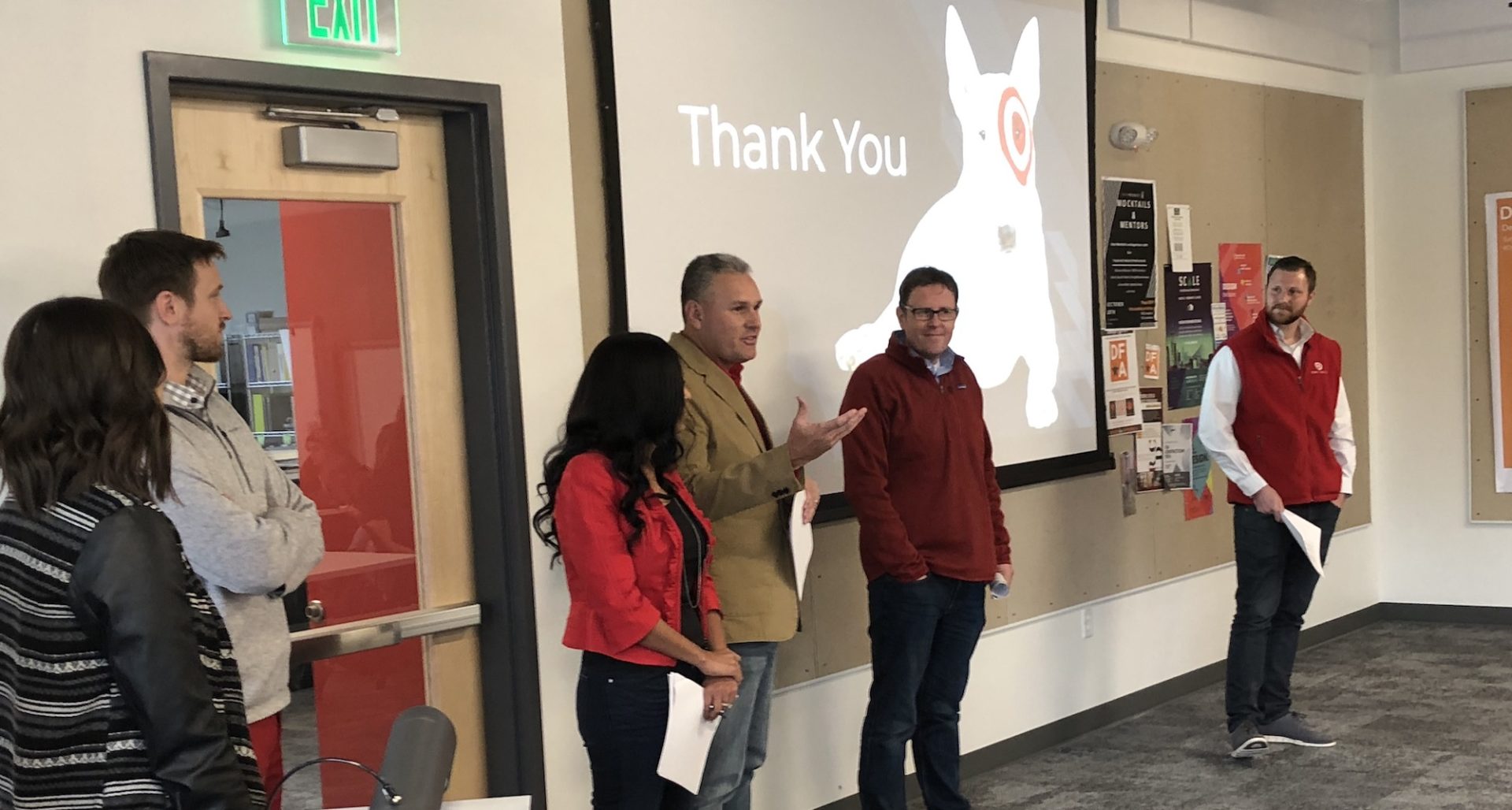
From left are Darielle Gengler of Target, Shrake and Target officials Fabiola Morin, Valdez, Josh Wing and CSU alumnus John Walsh, store director of the Target at College Avenue and Troutman Parkway.
‘Ways to give back’
Valdez, who has also held leadership positions at Amazon, said CSU gave him the foundation he needed to be successful in his career.
“CSU was a catalyst in helping me get more comfortable and confident with myself, to be able to start my career and understand my passions,” he said. “A lot of the basic things about how you get started in the business world I learned here on campus, and I owe that to this campus. That’s why it’s so important to me to try to find ways to give back.”
Valdez also said he hopes the Target team’s visits become a regular occurrence.
“This is not a one-time thing,” he said. “I’d love to make this an annual event, where Target has a large presence on campus for two or three days of the year. Our team can show the students opportunities across the business end-to-end, and it would align with who we are as an organization in terms of diversity and inclusion. CSU’s really shown us a great commitment, in helping Target get greater exposure here on campus, and I appreciate that very much.”
The design thinking class’s next project? Helping the Food Bank for Larimer County optimize its food collection/distribution systems to be more efficient so that it can donate the most food possible.
For more information about the Design Thinking certificate program, visit https://col.st/RVcxC.